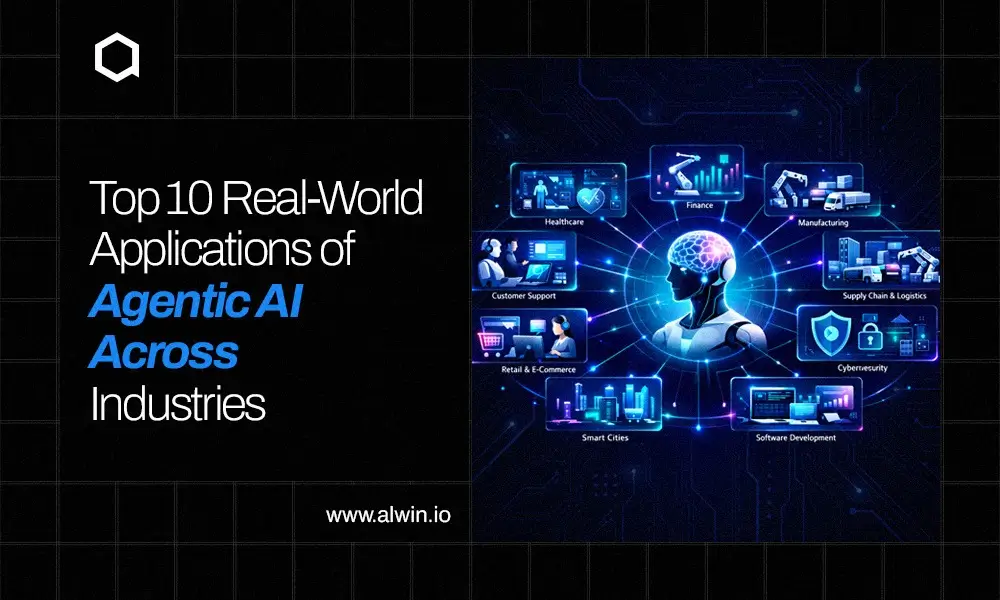The Ethereum Virtual Machine (EVM) is the backbone of most smart contract platforms, enabling developers to build decentralized applications (dApps) that run exactly as programmed. However, traditional EVM-based blockchains often face significant limitations in terms of scalability and transaction speed. Network congestion, delayed finality, and high gas fees continue to hinder user experience and mainstream adoption.
Enter MegaETH, the world’s first real-time EVM blockchain. Designed to address these longstanding issues, MegaETH brings an entirely new level of performance and responsiveness to the Web3 ecosystem. By combining real-time transaction processing with full EVM compatibility, it allows developers to build and deploy applications that react instantly and scale effortlessly.
Real-time EVM execution isn’t just a technical milestone, it’s a transformative leap for blockchain usability. From faster DeFi interactions to smooth Web3 gaming experiences, MegaETH is redefining what’s possible on-chain.
What Is MegaETH?
MegaETH is a next-generation blockchain that introduces real-time execution to the Ethereum Virtual Machine (EVM) ecosystem. Unlike traditional EVM-compatible chains that process transactions in blocks every few seconds, MegaETH is engineered to execute transactions almost instantly, bringing true real-time responsiveness to the blockchain world.
Fully compatible with existing Ethereum tools and smart contracts, MegaETH allows developers to build and deploy dApps using familiar technologies while benefiting from unmatched speed and scalability. This makes it a powerful platform for Web3 Development, where user experience, low latency, and flawless interaction are crucial for adoption.
MegaETH’s core mission is to break through the limitations of legacy blockchain architecture and deliver a system that supports Web2-level performance without compromising decentralization.
Key Innovations Behind MegaETH
MegaETH introduces a series of technical breakthroughs that set it apart from traditional EVM-compatible blockchains. These innovations are designed to deliver real-time performance, high scalability, and low-latency execution, solving some of the most persistent challenges in blockchain infrastructure.
Real-Time Execution Engine
At its core, MegaETH features a real-time execution model that processes transactions continuously instead of in block intervals. This enables sub-second finality, allowing applications to respond instantly to user actions.
Parallel Transaction Processing
Unlike conventional blockchains that execute transactions sequentially, MegaETH supports parallel execution. This drastically increases throughput and eliminates bottlenecks, especially during high-demand periods.
Optimized Networking Layer
MegaETH’s network layer is fine-tuned for low-latency peer communication and rapid transaction propagation. Validators can maintain fast synchronization, ensuring the network operates smoothly and efficiently.
Advanced State Synchronization
With efficient state sync mechanisms, MegaETH enables nodes to join and update rapidly. This enhances scalability and supports greater decentralization by lowering network participation barriers.
Full EVM Compatibility
Despite its technical advancements, MegaETH retains full compatibility with the Ethereum Virtual Machine. Developers can deploy existing smart contracts without modification and continue using the standard Ethereum tooling stack.
How MegaETH Works? A Simple Breakdown of Its Operational Process
MegaETH is a next-generation Layer 2 (L2) solution designed to bring real-time performance to the Ethereum blockchain. By utilizing advanced technologies and a unique architecture, MegaETH aims to address the scalability and latency issues commonly associated with traditional blockchain systems. Here's a straightforward explanation of how MegaETH operates:
1. Single Sequencer for Transaction Ordering
At the core of MegaETH's architecture is a single active sequencer responsible for ordering and executing user transactions. This design choice eliminates the need for a consensus process during transaction execution, significantly reducing latency and enabling near-instantaneous transaction processing.
2. Role Specialization: Sequencers, Provers, and Full Nodes
MegaETH employs a specialized node architecture comprising three distinct roles:
Sequencers: Handle the ordering and execution of transactions.
Provers: Verify the correctness of executed transactions using cryptographic proofs.
Full Nodes: Maintain the blockchain state and ensure data availability.
This separation of duties enhances scalability and efficiency by allowing each node type to focus on specific tasks.
3. Integration with EigenDA for Data Availability
To ensure that transaction data is reliably stored and accessible, MegaETH integrates with EigenDA, a data availability layer built on EigenLayer. This integration allows MegaETH to handle high transaction volumes while maintaining security and reliability.
4. Real-Time Transaction Processing
MegaETH's architecture enables it to process up to 100,000 transactions per second with minimal latency, often achieving block times between 1 and 10 milliseconds. This real-time capability makes it suitable for applications requiring immediate responsiveness, such as high-frequency trading and gaming.
5. Compatibility with Ethereum
Despite its advanced features, MegaETH remains fully compatible with the Ethereum Virtual Machine (EVM). This compatibility ensures that developers can deploy existing Ethereum smart contracts on MegaETH without modifications, facilitating flawless integration with the broader Ethereum ecosystem.
6. Security and Finality
While MegaETH provides near-instant transaction confirmations within its L2 environment, it relies on Ethereum's Layer 1 for ultimate security and finality. This dual-layer approach ensures that transactions are both fast and secure, benefiting from Ethereum's robust security infrastructure.
MegaETH achieves its real-time performance through a combination of a single sequencer model, specialized node roles, integration with a reliable data availability layer, and full EVM compatibility. This architecture allows it to offer high-speed, secure, and scalable transaction processing, positioning it as a significant advancement in the Ethereum L2 landscape.
Benefits of MegaETH
MegaETH isn’t just another Layer 2 solution, it’s a bold step forward in solving Ethereum’s biggest challenges: scalability, latency, and transaction costs. Built for real-time performance and massive throughput, MegaETH redefines what’s possible on-chain without compromising security or decentralization. Here’s a breakdown of the top benefits that make MegaETH stand out in the crowded L2 ecosystem:
1. Real-Time Transaction Speed
MegaETH achieves blazing-fast transaction finality with block times as low as 1 to 10 milliseconds. That’s virtually real-time, making it ideal for use cases like high-frequency trading, gaming, and DeFi apps where instant responsiveness is critical.
2. Massive Scalability
MegaETH can handle up to 100,000 transactions per second (TPS). This throughput allows it to support global-scale applications without bottlenecks or lag, something traditional L1 and most L2 chains struggle with.
3. Lower Transaction Costs
With reduced computational overhead and off-chain data handling via EigenDA, MegaETH significantly cuts down on gas fees. Users and developers benefit from lower costs, making it more accessible and sustainable for both casual users and enterprise-level dApps.
4. EVM Compatibility
One of MegaETH’s biggest strengths is its 100% compatibility with the Ethereum Virtual Machine (EVM). That means developers can deploy existing Ethereum smart contracts without rewriting code or learning a new environment, ensuring flawless migration and faster development.
5. Simplified Architecture with a Single Sequencer
Unlike complex consensus-based models, MegaETH uses a single sequencer to process and order transactions. This reduces complexity, speeds up processing, and ensures consistent performance—while still maintaining decentralization through specialized node roles (sequencer, prover, full node).
6. Enhanced Security with Ethereum L1 Finality
While MegaETH offers instant confirmations, all transactions are ultimately settled on Ethereum Layer 1, inheriting the security and finality of the Ethereum mainnet. This hybrid approach gives users both speed and safety.
7. Integration with EigenDA for Reliable Data Availability
By partnering with EigenDA, MegaETH ensures that all transaction data remains accessible, verifiable, and tamper-proof even as it scales. This makes it reliable for dApps that demand consistent uptime and trustworthy data handling.
8. Ideal for Advanced Use Cases
With its ultra-low latency and high throughput, MegaETH is perfectly suited for next-gen blockchain applications, including:
Real-time DeFi and algorithmic trading
Blockchain-based multiplayer games
Instant NFT minting and trading
High-frequency microtransactions
Decentralized identity and reputation systems
9. Developer and Ecosystem Friendly
MegaETH is designed to make life easier for developers. With tools that support familiar Ethereum standards, streamlined onboarding, and robust documentation, it’s a developer-friendly environment that encourages innovation and adoption.
10. Future-Proof Infrastructure
Built with scalability, modularity, and flexibility in mind, MegaETH is ready for what’s next in blockchain from AI integration to cross-chain interoperability. It’s not just solving today’s problems, it’s built for tomorrow’s opportunities.
MegaETH vs Traditional EVM Chains – A New Era of Real-Time Blockchain Performance
As blockchain technology evolves, developers and businesses are looking for solutions that can support real-time applications, high user demand, and low-cost operations. While traditional EVM (Ethereum Virtual Machine) chains have laid the groundwork, MegaETH is setting a new benchmark for what's possible with Ethereum-compatible infrastructure.
Let’s break down how MegaETH compares to traditional EVM chains across the most important performance and usability metrics.
1. Transaction Speed
Traditional EVM Chains:
Most traditional EVM-based chains like Ethereum Mainnet or BNB Chain have block times ranging from 5 seconds to 15 seconds. This delay isn’t ideal for real-time applications like high-speed trading or gaming.
MegaETH:
MegaETH delivers ultra-low latency, with block times between 1 and 10 milliseconds. It’s built for instant finality and real-time responsiveness—something traditional chains simply can’t offer at scale.
2. Throughput (Transactions Per Second)
Traditional EVM Chains:
Ethereum supports around 15-30 TPS, while chains like BNB Chain or Polygon can handle several thousand TPS, depending on the load and configuration.
MegaETH:
With its specialized architecture, MegaETH supports up to 100,000 TPS. That’s enterprise-level throughput, enough to power global-scale decentralized apps, gaming platforms, and financial systems.
3. Gas Fees
Traditional EVM Chains:
Ethereum gas fees can skyrocket during high congestion. Other EVM chains offer cheaper fees, but often at the expense of decentralization or network stability.
MegaETH:
By utilizing efficient execution and EigenDA for data availability, MegaETH keeps gas fees consistently low, even at high volumes, making it more affordable for both developers and users.
4. Architecture and Node Roles
Traditional EVM Chains:
Most EVM chains follow a monolithic node structure, where every full node handles all tasks—execution, data availability, consensus, and validation. This limits performance and scalability.
MegaETH:
MegaETH uses a modular node architecture, with specialized roles like sequencers, provers, and full nodes. This separation allows each component to operate more efficiently and scale independently.
5. Data Availability
Traditional EVM Chains:
Data is stored directly on-chain or with limited off-chain solutions. This can slow down the system and increase costs.
MegaETH:
Integrates with EigenDA, a decentralized data availability layer, to store and retrieve transaction data efficiently. This ensures fast access, better performance, and lower storage overhead.
6. EVM Compatibility
Traditional EVM Chains:
Fully compatible with existing Ethereum tools, smart contracts, and development workflows.
MegaETH:
100% EVM compatible, allowing errorless migration of Ethereum dApps without changing the code, while still gaining massive performance benefits.
7. Use Case Suitability
Traditional EVM Chains:
Great for general-purpose apps, token projects, and low-to-mid-speed dApps.
MegaETH:
Tailored for real-time applications, such as:
High-frequency trading platforms
Multiplayer blockchain games
Instant NFT minting and transfers
Scalable DeFi infrastructure
Real-time microtransactions
8. Security and Finality
Traditional EVM Chains:
Ethereum provides high security with its Proof-of-Stake model, though finality takes time. L2s inherit varying degrees of this security based on their setup.
MegaETH:
While it offers instant confirmations on the L2 level, MegaETH settles transactions on Ethereum L1, combining speed with the security of Ethereum’s finality.
MegaETH Is Not Just Faster—It’s Smarter
Traditional EVM chains paved the way for decentralized innovation. But as the blockchain space matures, the demand for real-time speed, scalability, and low fees is higher than ever. That’s where MegaETH dominates. It’s not just another EVM chain—it’s a real-time, enterprise-ready, Ethereum-compatible engine built for the future of Web3. If you're building a serious app or scaling an ecosystem, the choice is clear.
Use Cases and Real-World Applications of MegaETH
MegaETH isn’t just another blockchain upgrade, it’s a full-blown leap into the future of real-time, scalable, and ultra-efficient decentralized systems. With its lightning-fast transactions, modular architecture, and Ethereum compatibility, MegaETH is reshaping what’s possible across a wide range of industries. Let’s explore how MegaETH is being used or could be used to solve real-world challenges in practical and powerful ways.
1. High-Speed DeFi (Decentralized Finance)
Traditional DeFi platforms suffer from slow transaction finality and high gas fees, especially during market spikes. MegaETH changes that by enabling lightning-fast, low-cost operations ideal for:
- Instant swaps on decentralized exchanges (DEXs)
- Real-time portfolio rebalancing
- On-chain options and derivatives trading
- Flash loans and arbitrage strategies
This empowers both casual and professional users to interact with DeFi without delays or crazy fees.
2. Real-Time Blockchain Gaming
Web3 games demand low latency and high throughput to provide smooth gameplay and fast in-game transactions. With MegaETH, developers can build:
- Real-time multiplayer games with instant asset transfers
- Blockchain-based battle games, sports, or MMOs
- Instant NFT drops, upgrades, and trades within the game
- On-chain rewards and earnings distributed live to players
This opens the door to AAA-quality blockchain games that don’t compromise on performance.
3. NFT Marketplaces & Utilities
NFTs are more than just collectibles, they’re now dynamic assets tied to real-world value. MegaETH supports:
- Instant NFT minting and real-time auctions
- Low-cost trading and gifting of digital collectibles
- Scalable platforms for music, video, and event-based NFTs
- Royalties and metadata updates triggered by smart contracts
- Whether it’s art, gaming, or access passes, NFTs on MegaETH are faster and more functional.
4. Micropayments and Streaming Payments
Micropayments are nearly impossible on traditional chains due to high gas costs. MegaETH enables:
- Instant pay-per-use models (e.g., per article, song, or API call)
- Content tipping systems
- Creator-based subscription platforms
- Real-time payroll for freelancers or streamers
- It’s a game-changer for platforms wanting to monetize tiny actions at massive scale.
5. DAO Governance & Voting
Decentralized Autonomous Organizations (DAOs) thrive on participation. MegaETH supports:
- Real-time voting and result updates
- Instant proposal executions
- Live feedback loops with treasury transparency
- Low-cost participation for wide accessibility
- This makes governance more engaging, dynamic, and truly decentralized.
6. Real-Time Crypto Exchanges
For centralized or decentralized exchanges that rely on speed and trust, MegaETH offers:
- Sub-second order matching
- Real-time order book updates
- Liquidity aggregation with smart contracts
- On-chain arbitrage and trading automation
- This infrastructure supports professional-grade exchange platforms with blockchain security.
7. AI + Blockchain Integration
AI systems often need secure, verifiable data and microtransactions for services. With MegaETH, you can build:
- Decentralized AI data marketplaces
- Real-time decision systems using smart contracts
- AI-powered fraud detection in DeFi
- On-chain compute requests paid per inference
- Perfect for merging the intelligence of AI with the trust of blockchain.
8. Supply Chain & Logistics
MegaETH enables real-time, on-chain visibility of goods and services moving across the globe. Use cases include:
- Tracking product provenance (from farm to shelf)
- Real-time shipment updates via smart contracts
- Instant dispute resolution and insurance triggers
- Micropayments per delivery milestone
- Businesses can use MegaETH to create faster, fairer, and more transparent logistics systems.
9. Healthcare & Identity Management
In sensitive fields like healthcare or identity, speed and accuracy matter. MegaETH enables:
- Instant patient record access (with consent)
- Decentralized digital ID systems
- Verifiable medical certifications
- Real-time data sharing across providers
- It creates a secure environment for efficient, cross-border healthcare and compliance.
10. IoT (Internet of Things) Integrations
With so many smart devices generating data every second, MegaETH helps by:
- Logging real-time data from sensors securely on-chain
- Triggering automated smart contract actions based on sensor input
- Enabling decentralized device coordination (e.g., smart homes or cars)
- This is ideal for next-gen smart cities, logistics hubs, and connected living.
The Future of MegaETH – Real-Time Blockchain at the Core of Web3 Evolution
MegaETH has already positioned itself as a groundbreaking force in the Ethereum ecosystem, but its true impact is just beginning to unfold. As the demands for real-time, low-cost, and scalable blockchain infrastructure continue to rise, MegaETH is not just keeping pace, it’s setting the standard for what the next generation of decentralized platforms should look like.
Let’s take a forward dive into what the future holds for MegaETH and how it’s poised to reshape the blockchain landscape.
- The New Benchmark for L2s
- Mass Adoption of Real-Time dApps
- Integration with Emerging Tech (AI, IoT, Metaverse)
- Growth of a Developer-First Ecosystem
- Institutional Adoption & Enterprise-Grade Use Cases
- Expansion Through Layered Services and Subnets
- Growing Influence in the Ethereum Ecosystem
With unmatched speed, real-world compatibility, and enterprise-grade flexibility, MegaETH is poised to lead the next wave of blockchain adoption. It’s not just about building apps it’s about building ecosystems that can run in real time, serve millions, and evolve with tomorrow’s technology. The future of MegaETH is fast, fearless, and foundational. And for anyone serious about scaling in Web3, it’s the smartest place to build.



